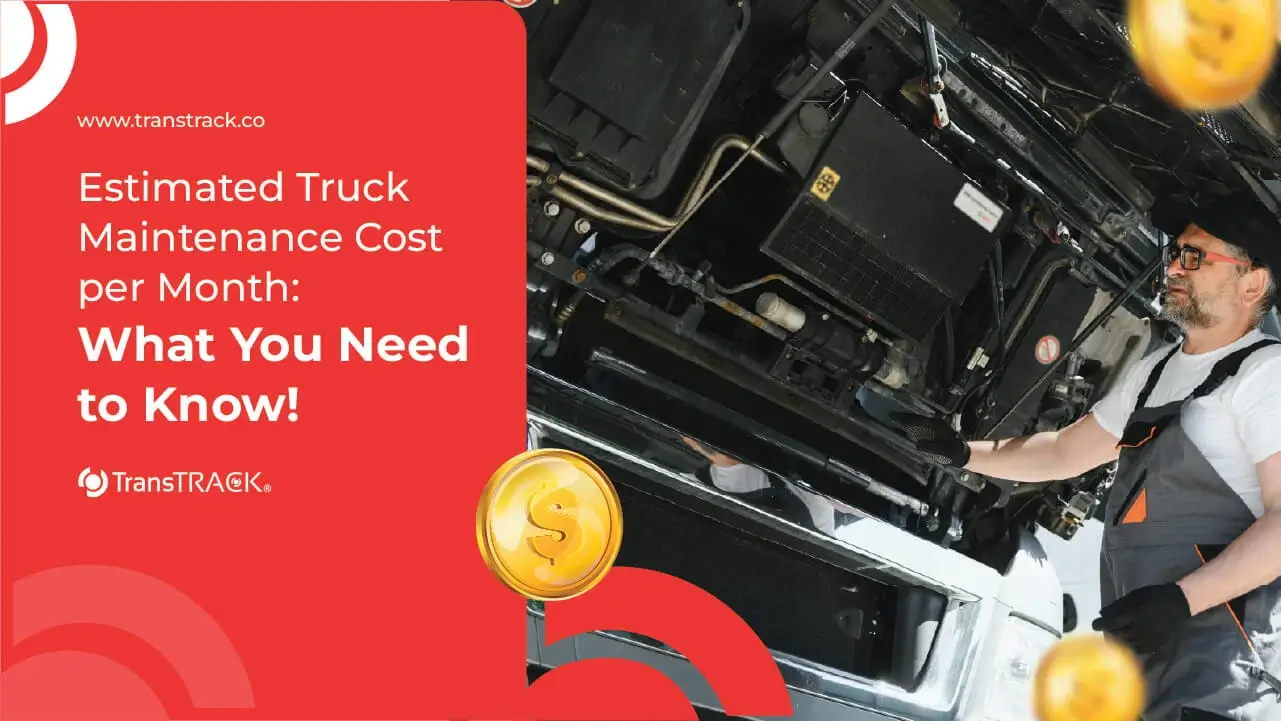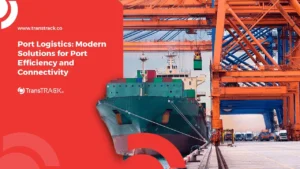Estimated Truck Maintenance Cost per Month: What You Need to Know!
Posted on May 26, 2025 by Nur Wachda Mihmidati

In the world of transportation and logistics, trucks are key assets that support the smooth running of daily operations. However, like any other asset, trucks require regular maintenance to keep them functioning optimally and safely. Unfortunately, maintenance costs are often one of the biggest expenses in fleet management, especially if not planned properly.
Understanding the structure of maintenance costs, the factors that affect them, as well as the efficiency strategies that can be applied will greatly help companies manage their budgets and extend the life of their vehicles. In the following article TransTRACK, we will discuss in detail the components of truck maintenance costs, their determining factors, estimated costs per month, and practical ways to save on these expenses.
What is truck maintenance cost?
Truck maintenance costs are all expenses incurred to keep the truck in optimal, safe, and roadworthy condition throughout its operational life. This cost includes various types of maintenance, both routine and repairs due to damage.
Components of Truck Maintenance Costs
When it comes to managing a truck fleet, proper maintenance is essential to ensure the vehicles remain in optimal, safe, and efficient operation. One of the key aspects of this maintenance is the maintenance cost, which includes different types of expenses. To help understand its expense structure, here are some of the major components in truck maintenance costs:
1. Parts and Spare Part Costs
This cost covers the purchase of components that must be replaced periodically or when a breakdown occurs.
Example:
- Oil, air and fuel filters
- Brake pads, brake discs
- V-belt, radiator hose
- Spark plugs, battery
- Tires and wheels
2. Engine and Electrical System Maintenance Cost
This is the cost of maintaining optimal engine and electrical system performance.
Example:
- Change engine oil and axle oil
- Injector and throttle body cleaning
- Engine timing and tuning
- Repair of alternator, starter dynamo, electrical system lights and sensors
- ECU or electrical module replacement
3. Periodic Inspection and Maintenance Fee
Costs incurred for scheduled routine inspections, either by kilometer or by time.
Example:
- KIR check or emission test
- Periodic service at authorized or partner workshops
- Calibration of specialized truck systems (such as tank trucks or refrigeration trucks)
- Braking, suspension and steering system checks
4. Labor and Mechanical Services Cost
Costs to pay for the services of technicians or mechanics, both in-house and third-party workshops.
Example:
- Cost per mechanic labor hour
- Service fees at authorized workshops
- Travel or emergency service costs
By understanding and categorizing these maintenance cost components, companies can plan budgets more accurately, as well as optimize truck life and reduce the risk of sudden breakdowns.
What are the factors that affect truck maintenance costs?
Truck maintenance costs are not fixed, but are highly dependent on various operational and technical factors. Understanding these factors is important so that companies can anticipate expenses and organize maintenance strategies more efficiently. Here are some of the key factors that affect truck maintenance costs:
1. Vehicle Age
The older the truck, the higher the risk of component damage and wear.
Impact:
- Frequency of parts replacement increases
- Need for overhaul of major systems such as engines or transmissions
- Potentially large component overhaul or restoration costs
2. Frequency of Use
Trucks that operate daily for a long duration will experience faster performance degradation.
Impact:
- Routine maintenance must be performed more often
- Higher risk of wear on vital components such as brakes, tires, and suspension
- Shorter oil and filter change intervals
3. Route Type and Load
The road terrain and load greatly affect engine performance and component durability.
Impact:
- Undulating routes or mine roads accelerate suspension and tire damage
- Heavy loads accelerate the wear of braking systems and transmissions
- Uphill routes force the engine to work harder, increasing fuel consumption and engine working temperature
4. Spare Part Quality
Choosing low-quality parts can reduce long-term maintenance efficiency.
Impact:
- Spare parts break down quickly or do not last long
- Replacement costs can be recurring in a short period of time
- Higher risk of operational disruption due to incompatible parts
Conclusion:
Effective truck maintenance management needs to consider these four factors to keep costs under control and the fleet in top condition. Solutions like digital fleet management systems can help monitor component age, vehicle usage patterns, and accurately record maintenance history.
How much does truck maintenance cost per month?
The cost of truck maintenance per month varies greatly depending on the type of truck, the intensity of use, and the maintenance standards applied. However, here is a general estimate based on truck categories and operational conditions in Indonesia:
Estimated Truck Maintenance Cost per Month (Average)
| Truck Type | Estimated Monthly Maintenance Cost | Main Description |
| Pickup Truck (1-2 tons) | Rp 500,000 – Rp 1,000,000 | Oil change, filter, light service |
| Engel Truck (2-5 tons) | Rp 1,000,000 – Rp 2,500,000 | Includes periodic service and spare parts |
| Fuso / Medium Truck | Rp 2,000,000 – Rp 5,000,000 | Additional for brake pads, battery, etc. |
| Tronton Truck/Trailer | Rp 4,000,000 – Rp 8,000,000 | Maintenance of brake system, hydraulics, tires, etc. |
Cost Components Calculated
- Routine service (oil, filter, light inspection)
- Labor cost / mechanical services
- Replacement of small parts (brake linings, spark plugs, etc.)
- Tire check and replacement (if scheduled)
- Unexpected costs (minor repairs)
Simulation Example (5-ton Engkel Truck, used 25 days/month):
- Oil + filter change: IDR 400,000
- Monthly routine service: IDR 800,000
- Small spare parts (approximate): IDR 500,000
- Mechanical labor cost: Rp 400,000 Total per month: ± Rp 2,100,000
Important Notes:
- If the truck is used for heavy, fully loaded, or long-distance routes every day, costs can increase by 25-50%.
- Trucks that are maintained with a preventive maintenance system usually save more in the long run than those that are only repaired when they break down.
How to Save on Truck Maintenance Costs
High truck maintenance costs can put a strain on a company’s operations, especially if not managed properly. By implementing the right strategies, companies can reduce expenses without compromising vehicle performance and safety. Here are some effective ways to save on truck maintenance costs:
1. Apply Periodic Maintenance (Preventive Maintenance)
Perform regular servicing on schedule, don’t wait for the truck to break down.
<Benefits:
- Prevents major damage
- Extends component life
- Lower risk of costly emergency repairs
2. Use Quality Parts
Choose parts with good quality and according to the manufacturer’s standards.
Benefits:
- Longer lasting
- Maintain optimal truck performance
- Avoid damage due to incompatible parts
3. Monitor Truck Usage in Real-Time
Utilize a telematics system or Fleet Management System like TransTRACK.
Benefits:
- Identify wasteful or damaging usage patterns
- Monitor vehicle locations and operating hours
- Help make data-driven decisions
4. Train Drivers to Drive Efficiently
Train drivers to drive safely and economically.
Benefits:
- Reduces stress on engine, brakes, and tires
- Lower fuel consumption
- Reduced risk of damage due to driver error
5. Record and Evaluate Maintenance History
Keep service and parts replacement records in a structured manner.
Benefits:
- Facilitates analysis of recurring damage
- Optimizing the next service schedule
- Avoiding unnecessary expenses
6. Optimize Operational Schedule and Routes
Use efficient routes and optimize truck usage schedules.
Benefits:
- Reduces vehicle workload
- Reduces fuel consumption
- Extends the life of the vehicle and its components
Conclusion:
Saving truck maintenance costs does not mean cutting maintenance, but rather implementing it in a planned, efficient and data-driven manner. Good fleet management will have a direct impact on cost efficiency and overall logistics performance.
Managing truck maintenance costs efficiently is key to keeping logistics operations running smoothly and avoiding unexpected expenses. By understanding the cost components, factors that influence them, and appropriate savings strategies, companies can extend the life of their fleet and increase productivity.

To optimally support this management, TransTRACK’s Vehicle Maintenance System comes as an integrated solution. This system helps you:
- Schedule periodic maintenance automatically
- Record and monitor vehicle service history
- Identify potential damage early on
- Control maintenance spend more accurately
Use TransTRACK to ensure every truck in your fleet stays in top condition, with controlled costs and efficient operations.
Contact our team today for a free demo or more information.
Recent Post
Topic :
 Bahasa Indonesia
Bahasa Indonesia









